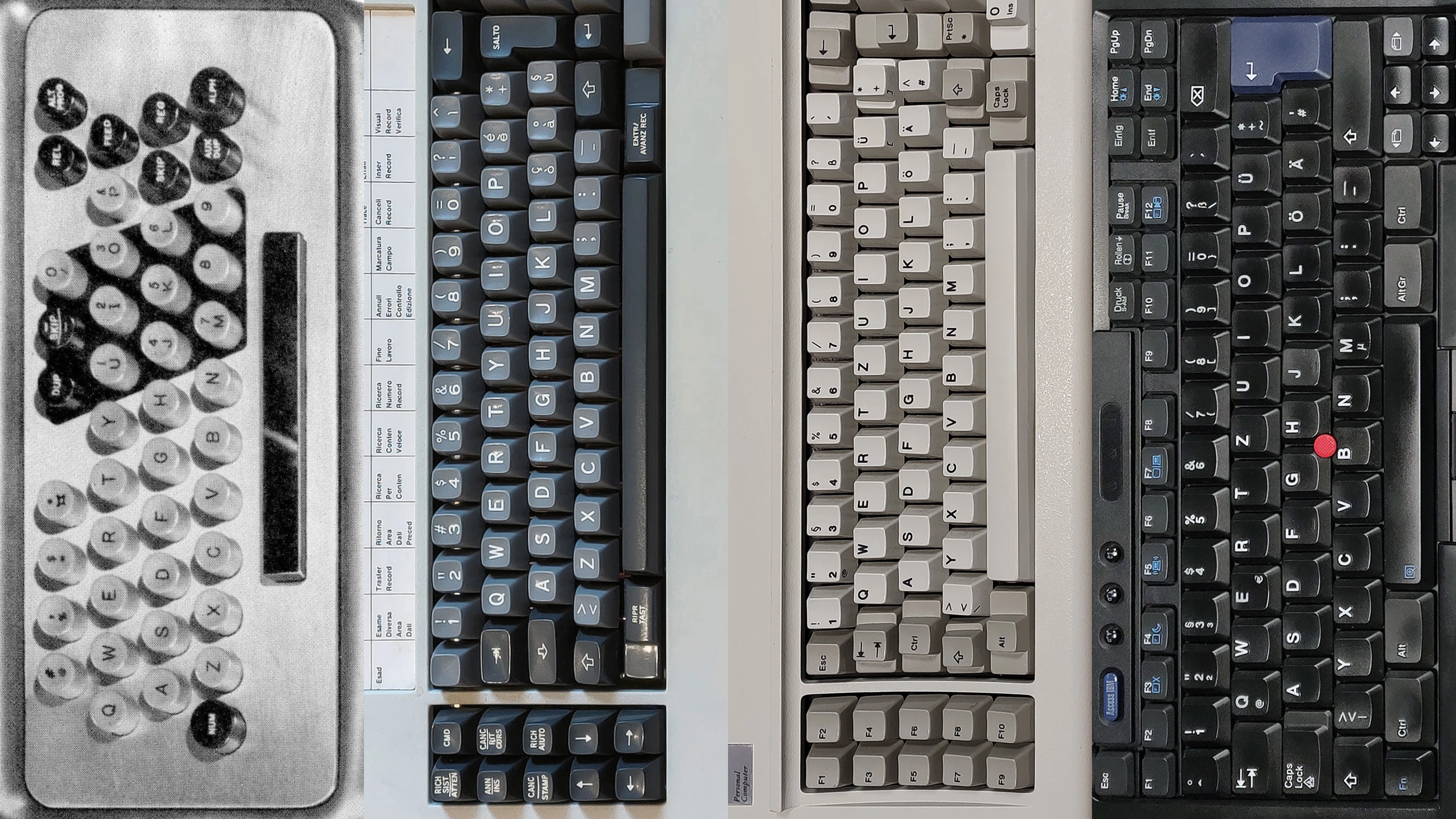A timeline of IBM keyboard history
The IBM and family keyboard timeline is an illustrated overview of some of the most important events affecting IBM, Lexmark, Unicomp, Lenovo and Toshiba Global Commerce Solutions keyboards. This includes notable keyboard releases and withdrawals, corporate history like company founding, divestures and change in OEMs, and patents. Due to their relationship and impact on the keyboards around them, host devices such as personal computers, terminals, consoles and typewriters also appear throughout the timeline. 144 events have been recorded for the "show all" versions of the timeline.
[1] IBM introduces the 024 Card Punch and 026 Printing Card Punch, both BCDIC electric keypunches with a choice of a 21-key numeric keyboard or a 45-key combination keyboard (pictured). These keyboards are technically discrete and electrically separable, so they are also considered to be IBM's first generation of keyboards under the modern sense of what a keyboard is. They use a contact-bail system for keystroke sensing called a Keyboard Permutation Unit.
[2] IBM announces the 029 Printing Card Punch, based on the earlier 026 Printing Card Punch but enhanced for operation with the IBM System/360 mainframe family. Whilst mechanically similar, 029 now supports EBCDIC characters. Its numeric and combination (pictured) keyboards are also similar and still contact-bail based, but given a styling overhaul, connect to their host keypunch via SMS-style connectors and could have more toggle switches depending on exact configuration.
[3] IBM announces the 3210 and 3215 (pictured) Console Printer-Keyboards. They are large auxiliary I/O terminals for IBM System/370 mainframes. 3210 uses a Selectric-based printer and is available as either a table-top or pedestal mounted unit, whereas 3215 uses a much faster dot-matrix printer but is only available as a table-top unit.
[4] IBM announces the 129 Card Data Recorder, the IBM System/370 era, SLT-logic successor to the 029 Printing Card Punch. The combination keyboard is now the only input device, as a numeric keyboard option was dropped. The 129 keyboard can easily be distinguished from its 129 predecessor via its program mode dial on its toggle switch panel.
- IBM - IBM 024 Card Punch 026 Printing Card Punch Customer Engineering Manual of Instruction (#22-8319-0) [accessed 2025-03-29]. License/note: photos used under fair dealing.
- Waelder @ Wikimedia - File:IBM card punch 029.JPG [accessed 2025-03-30]. License/note: CC BY-SA 3.0 (cropped and rotated).
- IBM - IBM 3215 Console Printer-Keyboard Component Description (#GA24-3550-1) [accessed 2022-09-04].
- Flominator @ Wikimedia - File:Rechnermuseum HFU 2193.jpg [accessed 2025-03-30]. License/note: CC BY-SA 3.0 (cropped).
